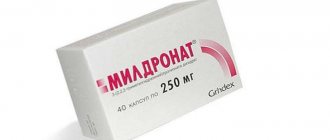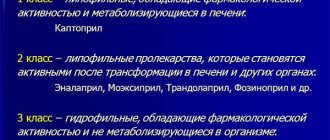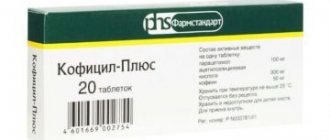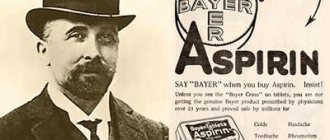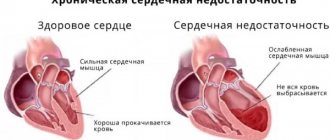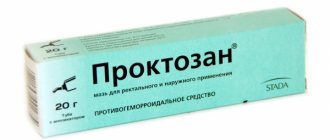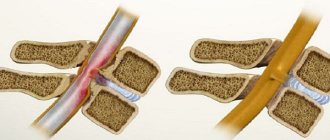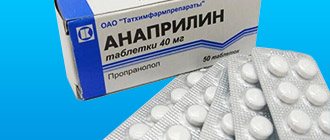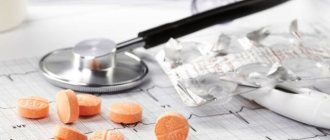The quality of a person’s life largely depends on how well his brain works. But the brain, like any other tissue of the human body, is subject to aging and damaging factors. Therefore, medicine strives to create drugs that will prolong the full life of the brain and, accordingly, the person. This group of drugs includes neuroprotectors - substances that protect brain cells from various types of influences and damage. Modern neuroprotectors, their range of applications and features of use will be discussed in this article.
There is probably not a single person in the world who, at least once in his life, has not in one way or another encountered the need to take neuroprotectors. Vascular pathology (stroke, dyscirculatory encephalopathies), traumatic brain injuries, neuroinfections and their consequences, neurodegenerative diseases (Parkinson's disease, Alzheimer's and others), vegetative-vascular dystonia, periods of increased mental stress - all this is not a complete list of conditions that require use neuroprotectors.
Neuroprotectors are substances that can help neurons resist damaging factors. This means that the brain cells remain “alive” and continue to perform their function. Neuroprotection is carried out in two ways:
- interrupting the rapid mechanisms of cell destruction. This is called primary neuroprotection;
- reducing the severity of long-term consequences of damage (impact on the processes of lipid peroxidation, blockade of inflammatory substances, normalization of metabolism, and so on). These phenomena are referred to as secondary neuroprotection.
The mechanisms of both types of neuroprotection are quite complex and occur at the biochemical level. But the main thing is the result: recovery or a significant reduction in the manifestations of the disease. Neuroprotectors can improve memory, attention, thinking, and restore strength and sensitivity in the limbs.
Due to the fact that the mechanisms of neuroprotection are very complex, there are quite a lot of drugs used for this purpose. They are difficult to classify because they have a completely different chemical nature (these are plant extracts, proteins, amino and hydroxy acids, and so on). In order to somehow understand the abundance of neuroprotectors that currently exist, we will try to divide them into the following groups:
- neuropeptides and protein drugs (Cerebrolysin, Actovegin, Cortexin);
- drugs of various chemical groups (Piracetam, Phenotropil, Encephabol, Gliatilin, Pantocalcin, Glycine, Phenibut, Citicoline, Picamilon, Semax and others);
- antioxidants (Mexidol, Cytoflavin);
- agents affecting blood flow (Cavinton, Oksibral, Sermion, Cinnarizine, Trental);
- herbal preparations (Ginkgo biloba extract).
Now let's look at each group in more detail.
Neuropeptides and protein drugs
Neuroprotectors are substances that help neurons resist damaging factors and improve their functions.
Cerebrolysin is a biologically active peptide from the pig brain. It is characterized by both primary and secondary neuroprotection. Effective for a wide variety of brain diseases. Approved for use in children. The drug can only be used parenterally (intramuscularly or intravenously) in a dose of 1 ml to 60 ml per day. Duration of application ranges from 10 to 30 days, courses can be repeated. Cerebrolysin has only two contraindications: acute renal failure and status epilepticus.
Actovegin is created on the basis of calf blood. It has a wider spectrum of action than just neuroprotection. This is possible due to the drug’s ability to increase the absorption of glucose and oxygen by any cells in the body. As a neuroprotector, it is most often prescribed for vascular diseases of the brain (stroke, dyscirculatory encephalopathy), and traumatic brain injuries. It is used intramuscularly (no more than 5 ml), intravenously, intravenously during the first 2-4 weeks from the onset of the disease, and then therapy continues in the form of tablets. This continuous course of treatment allows for maximum restoration of impaired nerve cell functions.
Cortexin is a complex of protein fractions isolated from the brain of pigs and cattle. This is a very good neuroprotector with excellent tolerability. Approved for use by both adults and children. Courses of treatment are quite short - 10 days each, which can be repeated after 1-6 months if necessary. The only drawback can be considered the fact that Cortexin can only be used intramuscularly (there are no other forms of release yet).
Nootropic drugs
Nootropics are drugs that stimulate metabolism in nervous tissue and eliminate neuropsychic disorders. They rejuvenate the body, prolong life, activate the learning process and speed up memorization. The term “nootropic” literally means “change the mind” when translated from ancient Greek.
- Piracetam is the most famous representative of nootropic drugs, widely used in modern traditional medicine for the treatment of psychoneurological diseases. It increases the concentration of ATP in the brain, stimulates the synthesis of RNA and lipids in cells. Piracetam is prescribed to patients during the rehabilitation period after acute cerebral ischemia. The drug is the first nootropic that was synthesized in Belgium in the last century. Scientists have found that this medicine significantly increases mental performance and perception of information.
- Cerebrolysin is a hydrolysate obtained from the brain of young pigs. It is a partially degraded whey protein enriched with amino peptides. Due to its low molecular weight, Cerebrolysin quickly penetrates the blood-brain barrier, reaches brain cells and exerts its therapeutic effect. This medicine is of natural origin, due to which it has no contraindications and rarely causes side effects.
- "Semax" is a synthetic neuropeptide complex that has a pronounced nootropic effect. It is an analogue of a fragment of adrenocorticotropic hormone, but does not have hormonal activity and does not affect the functioning of the adrenal glands. "Semax" adapts brain function and promotes the formation of resistance to stress damage, hypoxia and ischemia. This medicine is also an antioxidant, antihypoxant and angioprotector.
- "Cerakson" is prescribed to patients who have had a stroke. It restores damaged membranes of nerve cells and prevents their further death. For patients with TBI, the drug allows them to quickly recover from post-traumatic coma, reduces the intensity of neurological symptoms and the duration of the rehabilitation period. In patients, after active therapy with the drug, clinical signs such as lack of initiative, memory impairment, difficulties in the process of self-care disappear, and the general level of consciousness increases.
- “Picamilon” is a drug that improves cerebral circulation and activates metabolism in brain tissue. The medicine has the properties of an antihypoxant, antioxidant, antiplatelet agent and tranquilizer at the same time. In this case, depression of the central nervous system does not occur, drowsiness and lethargy do not occur. "Picamilon" eliminates symptoms of fatigue and psycho-emotional overload.
Preparations of various chemical groups
Piracetam is one of the first representatives of the class of neuroprotectors. It has been used for a very long time, however, it has not lost its significance even today. The drug is prescribed to both children and adults, both orally and parenterally. One of the necessary conditions for effective treatment with this drug is compliance with sufficiently high doses. For an adult, the average dose is 2.4 g per day, divided into 3 doses. The drug does not work from the first day of use, so treatment courses are usually long - 1-3 months. Absolutely identical drugs in composition are Nootropil, Memotropil, Lutsetam.
Phenotropil is a neuroprotector with an almost immediate effect. This means that its effect is felt after just a single dose. The ability to remember, concentrate, speed of thinking - all these processes are significantly accelerated. Phenotropil improves mood and increases the body's resistance to stress. The method of application is convenient: 100 mg in the morning after meals for an average of 30 days. After a month, the course can be repeated. There are currently no complete analogues of the drug.
Encephabol is one of the few neuroprotectors approved for use from birth (for this there is a release form in the form of a suspension). It is prescribed primarily for disorders of thinking, memory, mental retardation, and in the elderly for dementia syndrome. A noticeable effect is achieved with long-term use (usually at least 2 months). The drug must be taken during daylight hours as it can cause sleep disturbances. Doses and dosage regimen are selected individually. Side effects are extremely rare.
Gliatilin (choline alcerophosphate) is a precursor substance to acetylcholine (one of the main substances transmitting impulses in the nervous system) and phospholipids, from which the membranes of nerve cells are built. Complete analogues of Gliatilin are Cereton and Cerepro. Indicated for the treatment of acute conditions (stroke, traumatic brain injury) and chronic processes (encephalopathy of various origins, cognitive impairment, consequences of traumatic brain injury). In acute conditions, parenteral use is necessary at a dose of 1 g per day intravenously or intramuscularly for up to two weeks, followed by a transition to taking capsules at a dose of 1.2 g per day. Chronic processes are treated with 400 mg 3 times a day for 3-6 months.
Pantocalcin increases the brain's resistance to oxygen starvation and the effects of toxic substances. The drug has an anticonvulsant effect, due to which it is successfully used in people with consequences of traumatic brain injury in the form of convulsive syndrome, when other neuroprotectors are contraindicated. Works for tics, stuttering, urinary incontinence, behavioral disorders with attention deficit hyperactivity disorder. For the treatment of adults it is available in the form of tablets of 250 mg and 500 mg, and for children there is 10% Pantogam syrup (approved for use from the first days of life). The drug must be taken in the morning and afternoon.
Glycine is a natural aminoacetic acid in our body that improves metabolism in the brain. From the blood it easily and quickly penetrates into the brain cells. The drug is able to reduce psycho-emotional stress and has antioxidant and antitoxic effects. Due to its interaction with glutamate receptors, it is indicated in the first hours of a stroke as an emergency treatment (at a dose of 1 gram once). Glycine must be taken under the tongue, that is, dissolved until completely dissolved in the oral cavity. It has a good safety profile due to the fact that it is already present in the human body. Therefore, Glycine is also safely used in pediatrics.
Phenibut is a neuroprotector with a sedative effect. Thanks to the latter, the drug is used for anxiety and sleep disorders. The drug stimulates memory, learning ability, increases physical performance, and reduces dizziness. Available in the form of tablets and capsules of 250 mg. A complete analogue of the drug is Noofen, produced in Latvia. For children, there is Anvifen - this is the same Phenibut, but in a much smaller dosage (capsules of 25, 50 and 125 mg). For children, the drug can help with tics, urinary incontinence and stuttering, and to prevent motion sickness.
Citicoline is effective in the treatment of thinking disorders, motor and sensory disorders of a vascular nature. Capable of primary and secondary neuroprotection. Included in modern protocols for the treatment of ischemic strokes. It has no less effect on traumatic brain injuries. The more severe the disease, the greater the dose of the drug the patient needs. So, for a stroke, the required daily dose is 2 g during the first 2-3 weeks in the form of an intravenous infusion. Then you need to continue taking the drug orally for several months. Although the drug can be used intramuscularly, intravenous and oral use is more preferable. Complete analogues of the drug are Ceraxon and Recognan.
Picamilon is a long-known corrector of cerebral circulatory disorders. This is an inexpensive but effective neuroprotector in tablet form. Used for ischemic strokes (at different periods), for vegetative-vascular dystonia, migraines, traumatic brain injuries, neuroinfections and their consequences, alcoholism. The average period of use is 1-1.5 months. Complete analogues of the drug are Pikogam, Picanoyl, Amylonosar.
Semax is perhaps currently the only neuroprotector with an intranasal route of administration, which ensures absorption of up to 70% of the drug. In addition to neuroprotective effects, it has antioxidant, antihypoxic and neurotrophic effects. The mechanism of action is unique, which is associated with its chemical formula (an analogue of the natural hormone ACTH, but devoid of hormonal activity). Semax has a wide range of applications: stroke, chronic circulatory disorders, post-traumatic encephalopathy, the effects of anesthesia, increasing the adaptive capabilities of the brain under stress, and more. Approved for use in children over 5 years of age. A special feature of the application are fairly short courses - from 7 to 14 days (on average).
Classification of neuroprotectors
The list of drugs is large, the mechanism of action is very complex. They are difficult to classify, each has its own structure, action, chemical composition (contain plant extracts, protein components, hydroxy acids, amino acids). The main classification is based on the principle of operation. Based on the mechanism of action, they are distinguished:
- Antioxidants.
- Nootropics.
- Combination drugs.
- Vascular drugs.
- Adaptogens.
Neuroprotectors are used for preventive and therapeutic purposes. Allowed for children of different age groups, the dosage is selected according to their age and weight.
Antioxidants
Their main effect is to reduce the manifestations of oxygen starvation. Neutralizes free radicals that have harmful effects on the body.
Free radicals do not harm humans. They protect the body from viruses and bacteria. But if there are too many of them in the body, this leads to cell aging and the manifestation of a number of serious diseases.
Antioxidants are able to regulate the number of radicals, protecting against premature aging. They help cells recover, protect themselves from electromagnetic and radioactive radiation, and reduce the risk of developing cancer. A lack of antioxidants in the body is characterized by hair and tooth loss, the appearance of rough patches of skin (especially on the elbows), dry skin, apathy and depression. This group includes many drugs, the effect of each is determined by its composition.
Mexidol
A powerful drug to eliminate hypoxia during strokes and epileptic seizures. Its action:
- stimulates the body's defenses;
- increases resistance to stress and harmful environmental influences;
- improves blood supply to the brain, rheological properties of blood;
- reduces the level of low-density lipoproteins;
- effective for vegetative-vascular dystonia, dulling of the processes of thinking and perception (typical of senile dementia), decreased performance, and alcohol intoxication.
Antioxidants
Mexidol increases concentration and improves memory
Mexidol increases the adaptive capabilities of brain cells under conditions of ischemic and toxic influences, and prevents deterioration of blood flow during strokes. Due to its diverse influence, it improves memory, facilitates learning processes, increases concentration and performance. Indicated for patients with acute cerebrovascular accidents, discirculatory encephalopathies, vegetative-vascular dystonia, traumatic brain injuries in various periods, and for anxiety disorders. The drug has several forms of release, which allows you to switch from parenteral forms to oral administration. Course application takes on average 1-2 months. The dosage and mode of application are selected individually. Since there have been no clinical studies of the safety of this drug in children, it is not yet used in pediatrics. There are quite a few analogues of Mexidol: Mexicor, Neurox, Mexifin, Medomexi, Mexiprim.
Cytoflavin is a combination preparation containing succinic acid, inosine and riboflavin mononucleotide. Thanks to this composition, it helps improve oxygen absorption, restores the action of enzymes, which ensures the fight against free radicals, enhances the synthesis of substances inside nerve cells, and improves cerebral blood flow. All this, first of all, has a positive effect on the cognitive-mnestic functions of the brain and quality of life. The drug is prescribed as part of complex therapy for strokes, various types of encephalopathies, and asthenic syndrome. Acute conditions require intravenous drip administration of the drug (10-20 ml per day); for chronic processes, tablets are prescribed for 1-2 months.
Classification of drugs
Depending on the mechanism of action and composition, the following groups of neuroprotective drugs are distinguished:
- Nootropics – improve the functioning of the metabolic system and are used in the treatment of neurological and mental disorders.
- Antioxidants - designed to fight free radicals that appear under the influence of adverse factors.
- Vasoactive (vascular) drugs – reduce vascular permeability, help improve blood circulation:
- anticoagulants – reduce blood viscosity;
- angioprotectors – increase blood microcirculation in the walls of blood vessels, thereby reducing their permeability;
- myotropes – help increase vascular tone and blood flow through the vessels;
- drugs that affect metabolism (calcium channel blockers);
- psychostimulants – provide nutrition to the brain.
- Combination drugs – combine several properties (for example, vasoactive and antioxidant).
- Adaptogens are neuroprotective drugs of plant origin.
The described neuroprotectors, depending on the diagnosis and state of health, can be combined during administration, while the range of drugs, as well as the treatment regimen, must be determined by the doctor.
Drugs affecting blood flow
Cavinton (Vinpocetine) provides neuroprotection through a selective increase in cerebral blood flow. Moreover, increased blood flow occurs in the area that requires it most (in the area affected by ischemia). Indicated primarily for patients with cerebrovascular insufficiency as a result of strokes, cerebral atherosclerosis, dizziness of various origins, and tinnitus. The drug is prescribed intravenously or in tablet form. The course of treatment is at least a month. The drug is usually well tolerated by patients. It should be used with caution in people with cardiac arrhythmias.
Oxybral reduces cerebral vascular resistance, thereby increasing the flow of nutrients to neurons. Increased oxygen uptake by brain cells is accompanied by improved memory and intellectual functions. The drug can be used intravenously, intramuscularly and orally - in the form of syrup or capsules. Oksibral is approved for use in children over 6 years of age. The course of treatment is on average 2 months.
Sermion (Nicergoline) increases blood flow, reduces platelet aggregation, improves the transmission of impulses between neurons, which determines the neuroprotective effect. For use in adults only. Able to slightly reduce blood pressure. It is mainly prescribed to patients with cerebral atherosclerosis and hypertension with encephalopathy that has developed against this background. It has several forms of release (for parenteral administration and oral use), which ensures continuity in treatment.
Cinnarizine reduces the tone of the smooth muscle cells that make up small arteries, due to which the vessels dilate and more blood flows to the tissues. This effect develops not only in the vessels carrying cerebral blood flow, but also in the vessels of the heart and limbs. Therefore, the drug is indicated for patients with generalized atherosclerosis, intermittent claudication, trophic disorders in the limbs, and not only with discirculatory encephalopathies, consequences of strokes, dizziness and tinnitus. The drug is not used in patients with parkinsonism, since it increases the manifestations of this disease. There are combinations of Cinnarizine with Piracetam (Phesam).
Trental (Pentoxifylline) is able to dilate small vessels and reduce blood viscosity, preventing the gluing of some blood elements. Thanks to this, blood flow in the vessels of the brain, lower extremities, eyes and ears is normalized. You should know that in case of hemorrhage in the brain, the drug is contraindicated (and when treating its consequences, it is allowed). The drug is administered either intravenously by slow drip or orally in tablets. The timing of use and dose are very individual.
LiveInternetLiveInternet
Tuesday, May 08, 2012 14:27 + to quote book Cognitive impairments - Cognitive functions include: memory, attention, orientation in place and time, speech, intelligence, perception, the ability to learn and retain motor skills. — Cognitive impairments can be organic and functional. Functional cognitive impairment develops in the absence of direct damage to the brain substance. — The causes of functional cognitive disorders can be overwork, nervous stress and overload, and negative emotions. Functional cognitive impairment develops at any age. They are not dangerous and always go away or decrease significantly after the cause of the disturbance is eliminated. — Organic cognitive impairment occurs as a result of damage to the brain substance by one or another disease. Organic cognitive impairment is more common in older people and is usually more permanent. However, proper treatment in these cases allows for improvement and prevents further increase in disorders. — The most common causes of organic cognitive disorders are: — Insufficient blood supply to the brain. Diseases such as hypertension, cardiovascular pathology and strokes lead to insufficient blood supply to the brain. — Age-related decrease in brain mass (atrophy). — The cause of cognitive impairment may be: other brain diseases, cardiovascular failure, diseases of internal organs and metabolism, alcohol abuse or other poisoning. What is needed to improve memory - The “places” method. Imagine the floor plan of your apartment. Start at the front door, and then move from room to room in the order that is most familiar to you. Number all furnishings (“places”) and make a list of them. Learn this list of “places” well, and then use it to remember any information. To do this, you just need to come up with some kind of connection between this information and some “place” in the apartment. And in order to remember, you will need to mentally “walk through the apartment” again and see what “lies in each place.” — The “word-hanger” method. First you need to memorize a number of words with which associative connections will be established. These words will serve as "hangers". Then you need to “hang” other elements to be memorized on these “hangers”, imagining some kind of connection between the “word-hanger” and the memorized element. — The “visual chain” method. Used, for example, when memorizing a list of words. The first and second words from the list are combined using some kind of visual image. Then this image is supplemented with features associated with the third, fourth and so on word. Then, in order to remember the words, you need to restore the image in your memory. For example, you can remember three unrelated words like “cold-frame-book” through the following situational association: it’s cold outside, I’m sitting at home, near the window frame, reading a book. — The method of hinting with the first letters. The first letters of the memorized words are highlighted, and a new word is formed from them, which needs to be remembered. — Method of history. You need to come up with a simple and easily imaginable story with words presented for memorization. — Association method. Try to find emotionally charged associations in the material presented for memorization. - Memorizing poetry. — Solving Japanese crossword puzzles. Food and depression - Eating fish dishes speeds up thinking and improves concentration. Researchers have also found a clear link between fish consumption and decreased rates of depression in many countries around the world. For example, in the United States, the incidence of depression is 24 times higher than in Japan, where fish consumption is much higher - Olive oil, rich in monounsaturated fats, has been proven to improve memory. — Another one of the plants that is good for your brain. No studies have been conducted, but there are already many reports of individual cases of improved mental abilities due to basil. - nuts containing minerals and amino acids that are good for the brain - these are almonds and walnuts. EGB 761 – Tanakan 1 tab. ginkgo biloba dry standardized extract (EGb 761) 40 mg Indications for use intermittent claudication in chronic obliterating arteriopathy of the lower extremities; visual impairment of vascular origin, decreased visual acuity; hearing impairment, tinnitus, dizziness and coordination disorders mainly of vascular origin; Raynaud's disease and syndrome. cognitive and neurosensory deficits of various origins Properties at the level of tissue metabolism: Optimization of energy metabolism Reduced blood viscosity Improved capillary circulation Reduced capillary permeability Reduced peroxide oxidation processes Increased glucose uptake Increased ATP synthesis Reduced aggregation ation of red blood cells and platelets Decreased erythrocyte sludge Normalizes vascular tone without causing steal syndrome. Properties at the level of nervous tissue: Improvement of cerebral blood flow Increased pulse blood supply to the brain. Increased activity of non-functioning synapses. Formation of new synapses. Increased neural activity Increased neurotransmitter activity. Increased density of synaptic receptors. Improving memory – auditory and visual. Improved concentration Improved attention Relieves dizziness Reduced tinnitus Improves sleep Reduced irritability Eliminates coordination disorders For diabetes: Reduced intensity of pain in the leg Warmer limbs Increasing the distance of pain-free walking. Dosage regimen Prescribed 40 mg (1 tablet or 1 ml of oral solution) 3 with meals. Taken orally. The tablet should be taken with half a glass of water, the oral solution should be dissolved in half a glass of water. EGB 761 - Tanakan Contraindications to the use of the drug TANAKAN® pregnancy; lactation period (breastfeeding); For oral solution: erosive gastritis in the acute stage; acute cerebrovascular accidents; decreased blood clotting; age up to 18 years. Special instructions Improvement in condition appears 1 month after the start of treatment. Other GB preparations Bilobil - 40 mg, forte 80 mg Memoplant - 40 mg (EGB 761) Piracetam - nootropil ml. — Piracetam binds to the polar heads of phospholipids and forms mobile piracetam-phospholipid complexes. As a result, the two-layer structure of the cell membrane and its stability are restored, which in turn leads to the restoration of the three-dimensional structure of membrane and transmembrane proteins and their function. — Has a positive effect on the metabolic processes of the brain: increases the concentration of ATP in brain tissue, enhances phospholipids, enhances glucose utilization. Improves the integrative activity of the brain, promotes memory consolidation, and facilitates the learning process. Changes the speed of propagation of excitation in the brain, improves microcirculation without having a vasodilating effect, and suppresses the aggregation of activated platelets. Has a protective effect against brain damage caused by hypoxia, intoxication, and electric shock; — Improves connections between the cerebral hemispheres and synaptic conduction in neocortical structures, increases mental performance, improves cerebral blood flow. The effect develops gradually. It has virtually no sedative or psychostimulating effect. — Piracetam improves functions such as learning, memory, attention and consciousness, without having a sedative or psychostimulant effect. — The hemorheological effects of piracetam are associated with its effect on red blood cells, platelets and the vascular wall. - Application: Orally, at the beginning of treatment - 800 mg in 3 doses, before meals, as the condition improves, the single dose is gradually reduced to 400 mg; Duration of treatment is 6-8 weeks. Daily dose - 30-160 mg/kg, frequency of administration - 2 times a day, if necessary - 3-4 times a day. The duration of treatment ranges from 2-3 weeks to 2-6 months. If necessary, it can be repeated after 6-8 weeks. For long-term therapy of psychoorganic syndrome in the elderly - 1.2-2.4 g/day; loading dose during the first weeks of therapy - up to 4.8 g/day. When treating dizziness, the dose is 2.4-4.8 g/day in 2-3 doses. For alcoholism - 12 g/day during the period of manifestation of ethanol “withdrawal” syndrome; maintenance dose - 2.4 g. Children are prescribed at a dose of 30-50 mg/day. Treatment should be long-term. Oral solution: daily dose - 3.3 g (8 ml of 20% solution or 5 ml of 33% solution) 2 times a day (before breakfast and dinner). Can be added to fruit juice or other drinks. — Side effects: Mental agitation, motor disinhibition, irritability, imbalance, decreased ability to concentrate, anxiety, sleep disturbances, gastralgia, decreased appetite, headache, tremor, worsening angina. Phenotropil - Tablets of 50 and 100 mg Phenotropil are taken orally immediately after meals. -The average single dose is 100-200 mg, the average daily dose is 200-300 mg. The maximum daily dose is 750 mg. It is recommended to divide the daily dose into 2 doses. A daily dose of up to 100 mg should be taken 1 time in the morning; a daily dose of more than 100 mg should be divided into 2 doses. The duration of treatment can vary from 2 weeks to 3 months. Vasobral - dihydroergocriptine/caffeine - Composition and release form - 1 tablet contains alpha-dihydroergocriptine mesylate 4 mg and caffeine 40 mg; 10 pcs in a blister, 3 blisters in a box. - 1 ml of oral solution - alpha-dihydroergocriptine mesylate 1 mg and caffeine 10 mg; in dark glass bottles of 50 ml with a 2 ml pipette, 1 bottle in a box. — Alpha-dihydroergocriptine blocks alpha1- and alpha2-adrenergic receptors of vascular smooth muscle cells and platelets. — Caffeine has a stimulating effect on the central nervous system, mainly on the vasomotor and respiratory centers. — The drug has a vasodilating effect, increases blood circulation in capillaries, reduces platelet and erythrocyte aggregation, vascular wall permeability, improves metabolic processes in the brain, and increases tissue resistance to hypoxia. Has a preventive effect against migraine. — Indications: Cerebrovascular insufficiency (including due to cerebral atherosclerosis); residual effects of a stroke; decreased mental activity, decreased attention, disorientation; migraine; dizziness, tinnitus, retinopathy (diabetic and hypertensive); peripheral arterial circulation disorders (Raynaud's syndrome and disease); Side effects: Allergic reactions, decreased blood pressure. Tachycardia. Nausea. The caffeine contained in the drug can cause sleep disturbance and tachycardia. Directions for use and dosage: Orally (during meals, with a small amount of water), 1-2 tablets or 2-4 ml (1-2 pipettes) 2 times a day. Vinpocetine - Cavinton - a substance obtained from the leaves of the Vinca minor plant. Tablets 10 mg Tablets 5 mg - Tablets are taken orally, after meals. — The daily dose is 15-30 mg (5-10 mg 3 each). The initial daily dose is 15 mg. The maximum daily dose is 30 mg. The therapeutic effect develops approximately a week from the start of taking the drug. The course of treatment is 1-3 months. — Action improves cerebral circulation vasodilator, neuroprotective antiaggregation selectively increases cerebral blood flow and microcirculation, improves oxygen supply to the brain increases tolerance to cerebral hypoxia, activating aerobic glucose utilization, improves oxygen transport to tissues reduces platelet aggregation and increased blood viscosity, increases plasticity of erythrocytes Directly affects metabolism in brain tissue. Inhibits phosphodiesterase and activates adenylate cyclase, increasing the content of cAMP and then energy compounds (ATP). As a result, the blood vessels of the brain expand, and the blood supply to its tissues (oxygen transport) improves. Resistance to hypoxia (a condition that occurs in conditions of oxygen deficiency) increases, the processes of utilization (absorption) of glucose are activated (facilitated), as well as the metabolism of norepinephrine and serotonin in brain tissue. Vinpocetine Side effects: sleep disturbances (insomnia, increased drowsiness), dizziness, headache, general weakness A number of sources classify vinpocetine as drugs with unproven effectiveness. Not represented in the US Pharmacopoeia. In Western Europe and the USA it is distributed as a dietary supplement. Picamilon - Nicotinoyl gamma-aminobutyric acid Release form - tablets of 20 and 50 mg. Chemically, it can be considered as a combination of the molecule GABA and niacin. has pronounced vasodilating properties An increase in cerebral blood flow under the influence of picamilon is due to a decrease in the tone of cerebral vessels in the system of carotid and vertebral arteries, pial arterioles, an increase in the volumetric velocity of cerebral blood flow, a pronounced central depressive effect on the reflex contractile reactions of cerebral vessels It has been established that GABA is the main a neurotransmitter involved in the processes of central inhibition. Under the influence of GABA, the energy processes of the brain are also activated, the respiratory activity of tissues increases, the utilization of glucose by the brain improves, and blood supply improves. Gamma-aminobutyric acid relieves agitation and has a calming effect. Excess gamma-aminobutyric acid, however, can increase anxiety, shortness of breath, and trembling of the limbs. Picamilon is used (in adults) as a nootropic and vascular agent for mild to moderate cerebral circulatory disorders, for vegetative-vascular dystonia, for states of anxiety, fear, increased irritability, for abstinence in patients with alcoholism, as well as for increasing resistance to physical and mental stress . Use the drug alone or in complex therapy. Prescribed orally regardless of food intake. For cerebrovascular diseases, a single dose is from 0.02 to 0.05 g 2-3 times a day, a daily dose is 0.06-0.15 g. The course of treatment is 1-2 months. A repeat course is recommended after 5-6 months. In the complex treatment of depressive conditions in old age, picamilon is prescribed in daily doses of 0.04-0.2 g (in 2-3 doses) for 1.5-3 months. For alcoholism during the abstinence period, it is prescribed in doses of 0.1-0.15 g per day for a short course - 6-7 days; for more persistent disorders outside of abstinence - in a daily dose of 0.04-0.06 g for 4-5 weeks. Cogitum - potassium acetylaminosuccinate Solution for oral administration is light yellow, transparent, with the smell of banana. For adults, the average dose is 3 ampoules: 2 in the morning and 1 at night. The maximum dose is not known. Children aged 7 to 10 years are recommended to take 1 ampoule in the morning, children aged 10 to 18 years are recommended to take 2 ampoules in the morning. To take it, you need to open the ampoule on one side, then, placing a glass or cup under the opened end, break off the opposite end of the ampoule. After this, the liquid will flow freely into the substituted container. The taste of the drug allows it to be used without prior dilution. If it is diluted with water, the banana flavor may be lost. The most preferable is to take the drug in the morning. The average duration of treatment in children and adults is 3 weeks. Indications: functional asthenic conditions; neurosis with mild depression. general tonic, adaptogen. Helps stabilize nervous regulation processes, has nootropic and some psychostimulating activity. It is used for functional asthenic conditions, malaise, fatigue, neuroses with mild depression. Encephabol - pyritinol Dosage form: dragees, oral suspension, film-coated tablets. Method of administration and dosage: Orally, 15-30 minutes after meals, 2-3 times a day. For patients with sleep disorders and children with increased excitability, it is not recommended to take it in the evening and at night (last dose no later than 17:00), the tablets should be swallowed whole, preferably with liquid. In the first 10 days, adults - in a daily dose of 0.3-0.4 g, and then, depending on the effect and tolerability, increase or decrease the dose. The course of treatment lasts 1-3 months, in some cases - up to 6-8 months. Increases blood flow and increases the delivery and utilization of oxygen in ischemic areas of the brain, intensifies glucose metabolism in areas of the brain with post-ischemic damage. Stabilizes cell membranes, inhibits the activity of lysosomal enzymes and the appearance of free radicals. There is data on the ability to reduce the content of the GABA in the nervous tissue. It has a weak stimulating, antidepressant and insignificant sedative effect. Contraindications hypersensitivity, psychomotor agitation, epilepsy, state of increased convulsive readiness Side effects on the part of the nervous system and sensory organs: sleep disturbance, increased excitability, irritability, psychomotor agitation (in children), headache, dizziness, fatigue, anorexia, impaired, violation taste. from the gastrointestinal tract: nausea, vomiting, diarrhea, transient increase in transaminase activity, cholestasis. Other: arthralgia, flat lichen, pemphigoid skin reactions, alopecia, allergic reactions (rashes on the skin and mucous membranes, itching, hyperthermia). Semax-metionil-glutamil-hystididal-polil-glycil-Prolin A drug that has a nootropic and neuroprotective effect is a synthetic peptide preparation, which is an analogue of a fragment of adrenocorticotropic hormone is produced in the form of a solution of 0.1% and 1% for intranasal introduction. Semax affects the processes associated with the formation of memory and training. Enhances selective attention in training and analysis of information, improves the consolidation of a memorable trace; Improves the adaptation of the body to hypoxia, cerebral ischemia, general anesthesia, etc. damaging effects. In conditions of neuropsychic fatigue, it facilitates the concentration of attention, improves cameraman activities, helps preserve and accelerates the restoration of mental performance. Contraindications: hypersensitivity, acute psychotic states; disorders accompanied by anxiety; Convulsions (history), pregnancy, lactation, diseases of the endocrine system. side effects: excitement, insomnia, increase in blood pressure, skin rash. Local reactions: irritation of the mucous membrane of the nasal cavity. Method of application and dose: intranasally. With a pipette, a solution in an amount of not more than 1-3 cap is introduced into each nasal passage. If it is necessary to increase the dosage, the introduction is carried out in several techniques, with intervals of 10-15 minutes. A single dose is 1-18 cap (at the rate of 0.3-3 μg/kg). Introduced 2-3 times a day, with intervals of 3-4 hours, daily dose-420 μg (based on 0. 7-7 μg/kg). The course of treatment-3-5 days of glycine-aminouxic acid glycine is a neurotransmitter amino acid. Receptors for glycine are available in many areas of the brain and spinal cord and have a “inhibitory” effect on neurons, reduce the release of “exciting” amino acids from neurons, such as glutamic acid, and increase the release of the GABA. The pharmacological drug Glycine has sedative (soothing), soft transpliizing (anti -aircraft) and weak antidepressant effects, reduces the feeling of anxiety, fear, psychoemotional stress Composition Active substance: glycine - 100 mg Glycin is used sublingval or transbuccal at 0.1 g (in tablets or in the form of powder after grinding the tablet). With the functional and organic lesions of the nervous system, accompanied by increased excitability, emotional lability and sleep disorders, children under three years old are prescribed 0.5 tablets (0.05 g) for reception 2-3 times a day for 7-14 days, In the future, 0.05 g 1 time per day is 7-10 days. The daily dose is 0.1-0.15 g, the terminal-2.0-2.6 g. Children over 3 years old and adults are prescribed 1 tablet 2-3 times a day, the course of treatment is 7-14 days. Glycine is an amino acid produced by the body. And when taking 3 weeks, extraneous glycine is built into metabolic processes in the brain and, therefore, affects thinking. Positive or negatively is still unknown. This is a completely unexplored area, and this is a very big risk. Biotics (glycine) and nootropics are prohibited in the European Union for use on children, as they increase the likelihood of a convulsive syndrome, lead to changes in character and behavior and change the process of transmitting and processing information in the child’s brain. There are natural products containing glycine at the disposal of any housewife. This is a rich soup, ear, flooding fish, jelly. Even the jelly marmalade contains glycine. Each 100-gram of gelatin contains at least 20 g of glycine. In one chicken egg, the amount of glycine is approximately equal to 50 phenybut tablets-aminophenylmalic acid Form of release, composition and packaging of tablets 1 tab γ-amino-phenylbutic acid hydrochloride 250 mg facilitates Gaba-mediated transmission of nerve impulses to the central nervous system (direct effect on Gaba -recipients), also has a tranquilizing, psychostimulating, anti -agent and antioxidant effect. Side effect. Drowsiness, nausea. Strengthening irritability, excitement, anxiety, dizziness, headache (at first tricks) Phenibut has elements of nootropic activity, has a tranquilizing effect, reduces tension, anxiety, improves sleep; lengthens and enhances the effect of sleeping pills, narcotic, neuroleptic substances. It has an anticonvulsant effect. They use phenibut in asthenic and anxious-neurotic states, anxiety, anxiety, fear, insomnia, as well as as a soothing agent before surgical interventions. prescribe phenibut inside after eating adults at 0.25-0.5 g 3 times a day with courses of 2-3 weeks. If necessary, increase a single dose to 0.75 g (people over 60 years old are prescribed no more than 0.5 g per reception). Children under 8 years of age are prescribed 0.15 g per reception; from 8 to 14 years - 0.25 g per reception. Noopept-ethyl ether n-phenicityl-l-prolillycin Tablets 10 mg blocks potential-dependent calcium channels of neurons, weakening the neurotoxic effect of excess calcium. The nootropic effect of the drug is associated with the formation of cyclopolillyglycin, similar in structure to endogenous cyclic dipeptide, which has anti -amnestic activity, as well as the presence of a holinopositive action. The amplitude of the transcalloose response greats, facilitating associative connections between the hemispheres of the brain at the level of cortical structures. Indications for the consequences of craniocre trauma; cerebrovascular failure (encephalopathies of various genesis); The drug is prescribed in the initial dose of 20 mg - 10 mg each in 2 doses (in the morning and day). With insufficient effectiveness of therapy and with good tolerance of the drug, the dose is increased to 30 mg - 10 mg in 3 doses during the day. The drug should not be taken later than 18 hours. The duration of the course treatment is 1.5-3 months. A repeated course of treatment, if necessary, can be carried out after 1 month. Cortexin contains a complex of low-molecular water-soluble polypeptide fractions with a molecular weight of not more than 10,000 yes, isolated from the cerebral cortex of cattle or pigs not older than 12 months. The drug is administered in/m. Adults are prescribed at a dose of 10 mg 1 time/ within 10 days; Children with a body weight of less than 20 kg - at a dose of 0.5 mg/ kg body weight, with a body weight of more than 20 kg - at a dose of 10 mg/ for 10 days. Pantogam - calcium salt of gopanthenic acid Nootropic agent, has neurometabolic, neuroprotective and neurotrophic properties. Increases the resistance of the brain to hypoxia and the effects of toxic substances, stimulates anabolic processes in neurons, combines a moderate sedative effect with a soft stimulating effect, has an anticonvulsant effect, reduces motor excitability with simultaneous streamlining of behavior. Increases mental and physical performance. It contributes to the normalization of the content of the GABA for chronic alcohol intoxication and the subsequent abolition of ethanol. Method of application and dose: inside, 15-30 minutes after eating. A single dose for adults is 0.5-1 g, for children-0.25-0.5 g; The daily dose for adults is 1.5-3 g, for children-0.75-3 g. The course of treatment is 1-4 months, in some cases-up to 6 months. After 3-6 months, a repeated course of treatment is possible. Children with mental failure and oligophrenia-0.5 g 4-6 times a day, daily, for 3 months; With a delay in speech development-0.5 g 3-4 times a day for 2-3 months. Omaron Piracetam tablets 400 mg zinnarisine 25 mg A combined drug with anti -Hipoxic, nootropic and vasodilating effect. Cytoflavin 1 tab. Amber acid 300 mg of Inosin (riboxin) 50 mg nicotinamide 25 mg riboflavin mononucleotide 5 mg as part of complex therapy in adults: Chronic brainstream of 1-2 stages (cerebral atherosclerosis, hypertension encephalopathy, consequences of stroke); Dizziness as a problem Dizziness is one of the most common symptoms found in medical practice. Among the reasons for contacting doctors of different specialties, dizziness is 3-4% according to Yardley L., during a survey of more than 20 thousand people aged 18 to 64 years, it turned out that over the past month, more than 20% experienced dizziness, of which Over 30% suffer from dizziness for more than 5 years. During a survey of 1000 people over 65 years old, 30% of respondents reported about the presence of dizziness. About a third of patients addressing otorhinolaryngologists note various types of dizziness, which is customary to classify as systemic (vertigo) or non -systemic dizziness. Dizziness can lead to a significant deterioration in the quality of the patient’s life, depriving him of the opportunity to lead the usual lifestyle and fulfill professional duties, often making it dependent on outside help in everyday life, can cause a persistent loss of disability or cause disability. The causes of dizziness Dizziness develops as a result of the imbalance of sensory information coming from the main afferent systems that provide spatial orientation - vestibular, visual and proprioceptive. Causes of disease of the middle and inner ear of an inflammatory and non -inflammatory nature; Diseases of the central nervous system; Increased intracranial pressure damage to the neck organs, including degenerative-dystrophic changes in the cervical spine (cervical osteochondrosis); metabolic and hematological causes; violations caused by medicinal substances; infectious lesions; Cardiogenic disorders; Other reasons. The mechanism of action Betaserk is a drug, which aimed at the vestibular system, the violations of which cause dizziness. Betaserk has a comprehensive mechanism of action, affects both the area of the inner ear and the system of conductivity of nerve impulses in the central nervous system. The mechanism of action At the peripheral level level, the drug has a vasodilating effect, causing an improvement in the blood flow of the inner ear. This occurs due to the activation of the H1 -receptors and indirectly through the blockade of the H3 receptors, by increasing the concentration of histamine during blockage H3 - receptors. In addition, the impulse activity of the ampular receptors of the inner ear is inhibited (due to the blockade of H3 - receptors); At the level of the central link, the electrical activity of the vestibular nuclei of the brain stem (blockade H3 receptors) is normalized. In addition, the betaserk improves the venous outflow from the skull cavity Pharmacodynamics It improves the microcirculation and permeability of the capillaries of the inner ear Normalizes the pressure of endolymphs in the labyrinth and snail Enlarges blood flow in the basic arteries. It has a pronounced central action Normalizes neuronal transmission in the neurons of vestibular nuclei at the level of the brain stem. reduces the frequency and intensity of dizziness, Reduces noise in the ears It improves hearing in case of decrease. Indications Vestibular dizziness (treatment and prevention); syndromes characterized by dizziness and headache, ears in the ears, progressive hearing decrease, nausea and vomiting; Disease/Menyer Syndrome Contraindications Hypersensitivity to the components of the drug. Caution should be observed in the treatment of patients with ulcer of the digestive tract, pheochromocytoma and bronchial asthma (constant monitoring is needed during the treatment). It does not have a sedative effect and does not affect the ability to control the car or work on machines and mechanisms. How the betaserk Betaserk is well tolerated, does not have a sedative effect, therefore it does not violate performance, does not affect the ability to drive vehicles. Betaserk does not affect systemic arterial pressure, which makes it convenient in use even in old age. Betaserk can be used for a long time, does not cause any side effects, which was proved both in the course of research and a long practice of its application.
| Categories: | medicine/medicines (secret pharma) |
Tags:
medicine tablets medicine
Cited 4 times Liked by: 4 users
Like share
0
Like
- 4
I liked the post - Quoted
- 0
Saved
- Add to quote book
- 0
Save to links
Liked4
0
Herbal preparations
Preparations based on Ginkgo biloba extract not only have a neuroprotective effect, but also improve peripheral blood circulation.
Ginkgo biloba extract (Ginkoum, Memoplant, Bilobil, Tanakan) has established itself as a drug with excellent tolerability, that is, it very rarely causes side effects. The neuroprotective effect is combined with improved blood flow in the extremities. One of the disadvantages of use is the rather long courses of treatment: from 2 months to 6.
As this review of neuroprotective agents shows, there are many such drugs. This article contains information only about the most common of them. Each neuroprotector has its own specific mechanism of action, effect on brain metabolism, timing and methods of application. Thanks to this, treating doctors have the opportunity to have a differentiated approach to the treatment of certain diseases.
Features of taking medications
Treatment with neuroprotective drugs is the most promising direction in cases of oxygen deficiency and cerebral circulation disorders.
The peculiarity of the use of drugs of this type is their rapid action and long-lasting effect.
The medications contain not only neuroperptides, but also minerals, amino acids and vitamins.
When choosing drugs that are suitable for the patient, the doctor prescribes an additional examination with the involvement of colleagues from other areas to identify hemodynamic disorders. It is imperative to monitor the effectiveness of the chosen drug during the first days of treatment.
The most effective method of using neuroprotectors is drip administration. In this case, the drug is administered by infusion lasting from an hour to an hour and a half. The second most popular prescriptions are intravenous and intramuscular injections. Some neuroprotectors can be used in tablets or capsules for courses of up to six months.
Side effects
Treatment with nootropics with strict adherence to the specialist’s recommendations will produce a positive effect. But it is worth knowing that even the slightest deviation in dosage, time of administration, or duration of treatment can cause the opposite effect - even the best nootropics, if used incorrectly, can increase the symptoms of the disease and provoke a disorder of cognitive functions.
Popular nootropics with proven effectiveness, in case of non-compliance with prescriptions, have the following side effects:
- Piracetam. Decreased intellectual abilities, sleep disturbances, attacks of drowsiness, anxiety, irritability, dementia, deterioration in concentration, gastrointestinal problems;
- Phenotropil. Skin hyperemia, increased blood pressure, fever, attacks of insomnia, psychomotor agitation;
- Semax. Apart from the irritant effect on the mucous membrane with frequent use, no side effects were identified.
Features of nootropic therapy
When observing a patient with a number of diseases, the treatment of which requires stimulation of brain activity, nootropic therapy shows maximum effectiveness. Nootropics are also prescribed to physically and mentally healthy people experiencing severe mental stress.
When prescribing nootropics, our doctors follow a number of principles:
- Drugs are prescribed only after a thorough examination and an accurate diagnosis;
- The daily and course dosage of drugs is established, which cannot be violated;
- Tests are carried out to determine the compatibility of nootropics with a number of other medications prescribed to the patient;
- Other factors are taken into account: the patient’s age, the presence of pathologies, etc.
Taking into account all possible risks, prescribed nootropics to improve memory will not only be highly effective, but also safe for the patient.
Update date: 02/12/2020
